New tribute to a complex leader: Calgary society prepares to unveil Winston Churchill monument
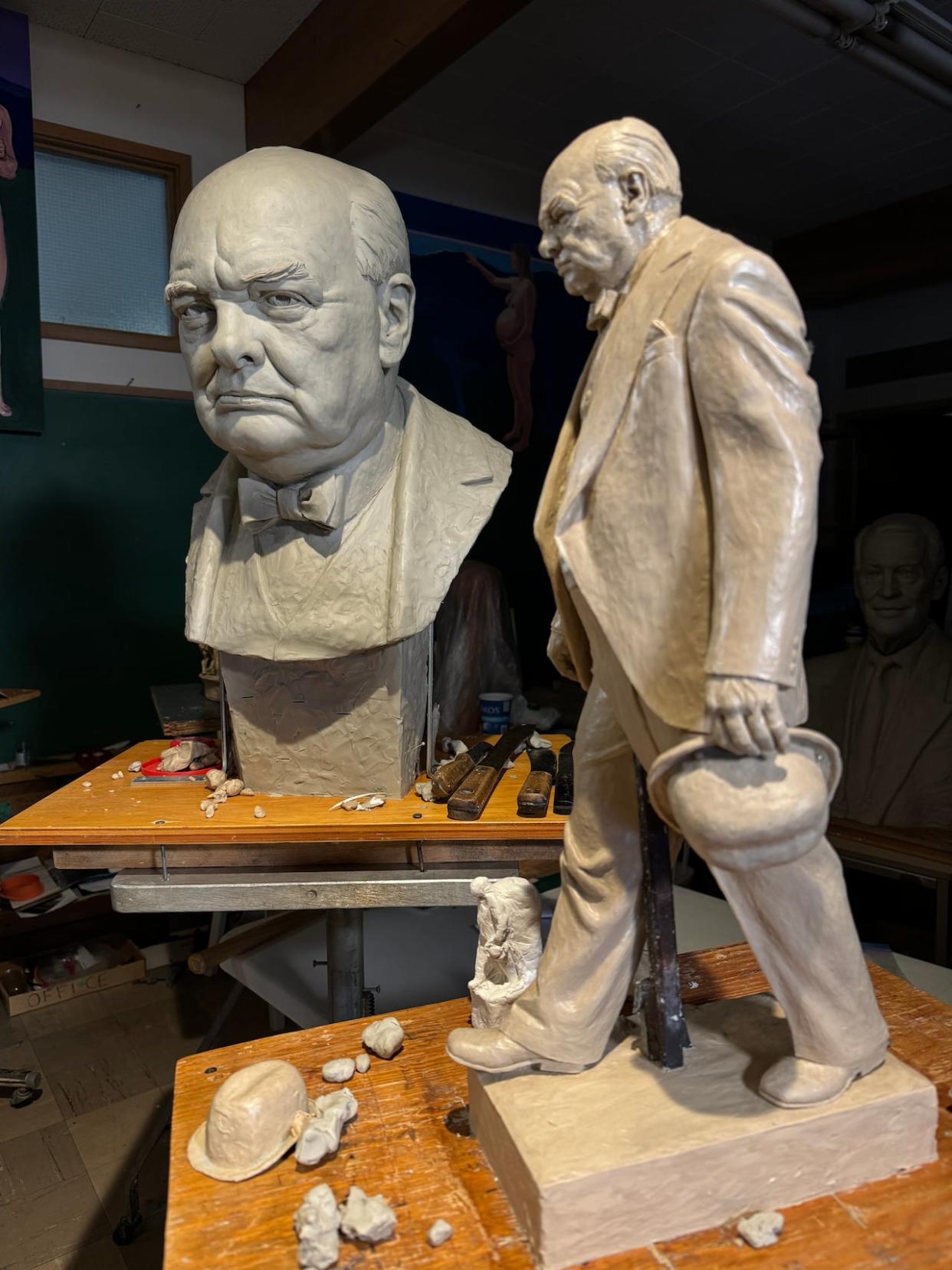
- Oops!Something went wrong.Please try again later.
- Oops!Something went wrong.Please try again later.
A towering Second World War figure with a contentious history is about to make a reappearance in Calgary.
On June 6, a nearly three-metre-tall bronze statue of Britain's wartime prime minister Winston Churchill will be unveiled on the grounds of a historic Calgary building that houses Alberta government offices.
The province spent $60,000 to prepare the McDougall Centre site but the bulk of costs are being paid by the Sir Winston Churchill Society of Calgary, whose members spent years fundraising for the monument.
One of its members is Jason Kenney, who as Alberta's premier in 2022 announced the statue's location on provincial government property.
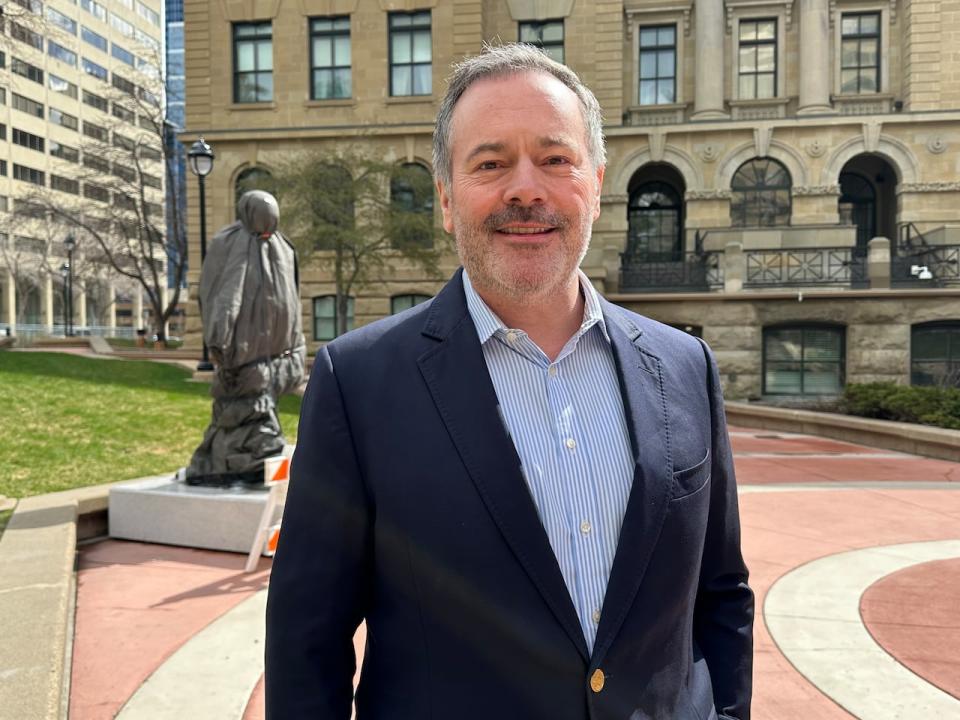
Former premier Jason Kenney stands near a shrouded statue of Sir Winston Churchill, set to be unveiled on June 6 in Calgary. Kenney supported the project and announced its location outside the provincial government building. (Mike Symington/CBC)
"I think it's a good connection to [Churchill's] role as a champion of parliamentary democracy," Kenney said in an interview earlier this month.
The society paid $300,000 for the design, sculpting, casting and installation of the bronze sculpture, and they're hoping to raise another $150,000 for maintenance and protection.
In late April, a crane lowered a 4,173-kilogram white granite base onto the statue's future home, then dangled the statue, shrouded in a green tarp, into place.
Churchill, who died in 1965, was a soldier, war correspondent and Nobel Prize winner for literature. He is best known for his time as British prime minister during the Second World War, securing Britons' support for the effort and working with other Allied leaders to defeat Hitler's Nazi regime.
But his critics point to the leader's record of racist comments and statements that he believed non-white people were inferior.
Kenney says Churchill is relevant today because the issues he wrestled with persist.
"When you see the rise of people like [Russian president] Vladimir Putin and other authoritarian regimes threatening peace and security, I think it's important to remember the lessons of Churchill in the 1930s and '40s, which is never to appease evil and aggression, but to call it out for what it is," Kenney said.
In 1929, Churchill came to Alberta as part of a lecture tour of North America. He visited Edmonton, Banff, Lake Louise, and Calgary, as well as oilfields south of the city in Turner Valley. During that tour, he gave a speech at Calgary's Palliser Hotel, painted seven works of art, and received an off-white Stetson hat.
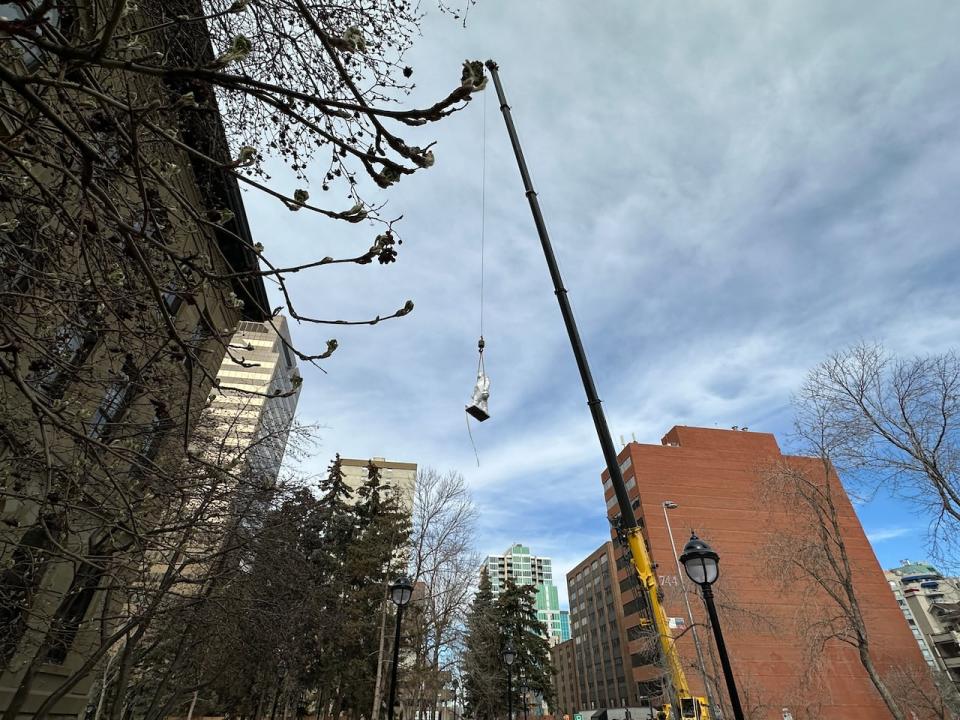
A crane lowers a bronze sculpture of Sir Winston Churchill onto the grounds of Calgary's McDougall Centre on April 27. (Submitted by Danek Mozdzenski)
Heather Coleman, chair of the Churchill society's statue project, says she hopes Calgarians think about the wartime leader's principles and resolve when they see the installation.
"When I think of things like Jan. 6 in the States, and the fact that we almost didn't have a peaceful transition of power in our largest democracy, I think those are lessons we should be holding dear more than ever," she said in an interview.
June 6, the day of the statue's unveiling day, is the 80th anniversary of D-Day, a turning point in the Second World War when more than 150,000 Allied troops arrived on the beaches of Normandy, France, to begin pushing German forces out of the country.
'Wasn't a perfect man'
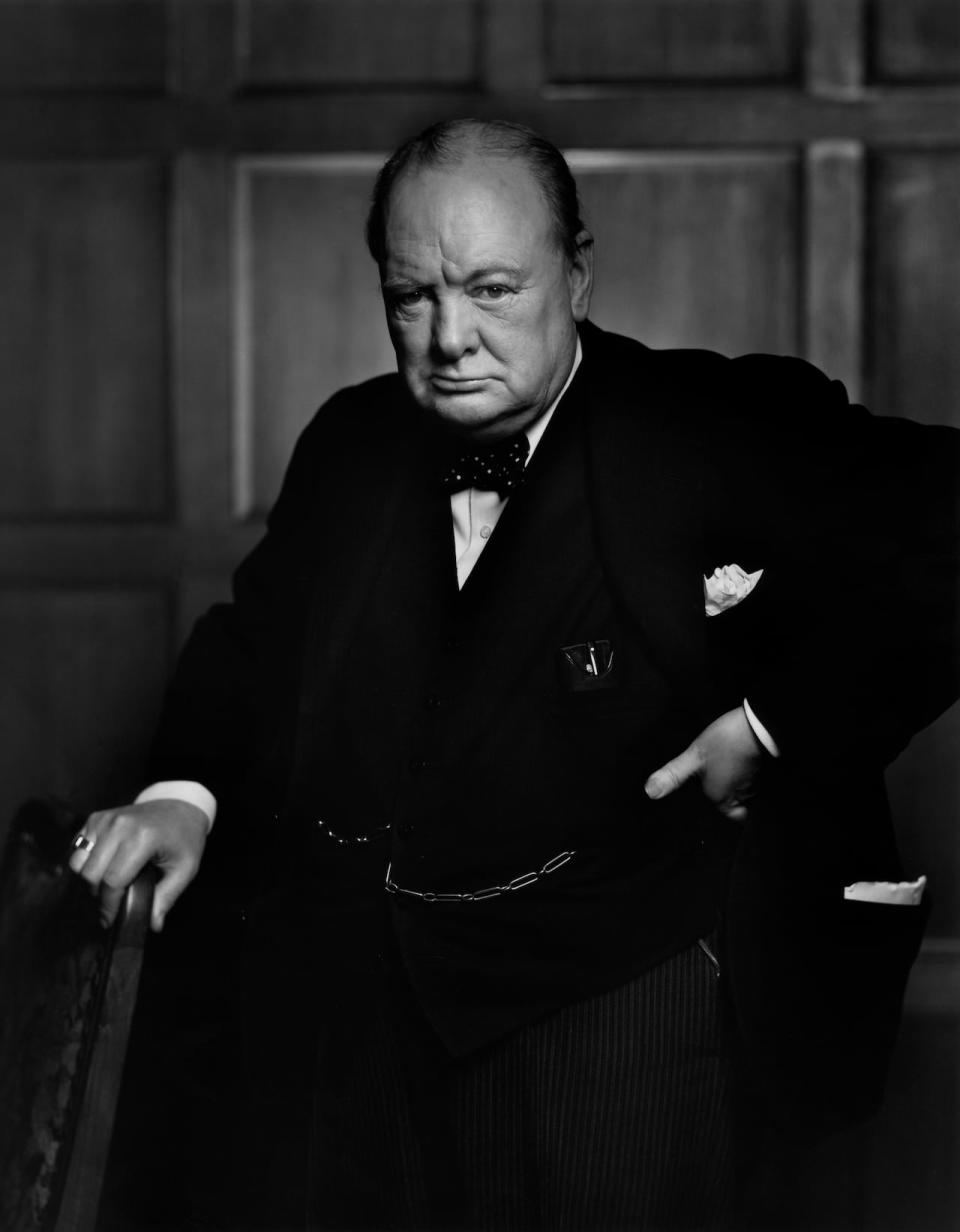
A photo of Winston Churchill shot in 1941 by Yousuf Karsh. Historians now regard Churchill as a contentious figure, who made racist remarks and favoured retaining British control of colonies such as India. (Yousuf Karsh)
Lionizing an author of British colonization with a record of making racist remarks may be a bold choice in 2024, says John Ferris, a professor emeritus of history at the University of Calgary.
Even Churchill enthusiast Kenney says the leader "wasn't a perfect man," but a product of his time whose victories outweigh his mistakes.
While premier, Kenney was critical about the renaming of edifices and defacement of monuments, deriding it as "cancel culture."
In 2020, when vandals in Montreal toppled a statue of Sir John A. Macdonald, Canada's first prime minister, Kenney asked that the monument be sent to Alberta to be repaired and remounted.
The Montreal incident was among a series of similar attacks around that time on statues of Macdonald, Churchill and others.
When Edmonton's Churchill statue was doused in red paint in 2021, Kenney decried the vandalism on X, writing, "No member of the greatest generation can meet the standards of contemporary wokeness. But we should still honour those who secured our peace and freedom."
Ferris says historians consider Churchill a polarizing character.
People with South Asian roots may associate the man with Britain's involvement in India during the Bengal famine of 1943-44. Churchill was British prime minister when war and crop failures led to at least two million people dying of starvation.
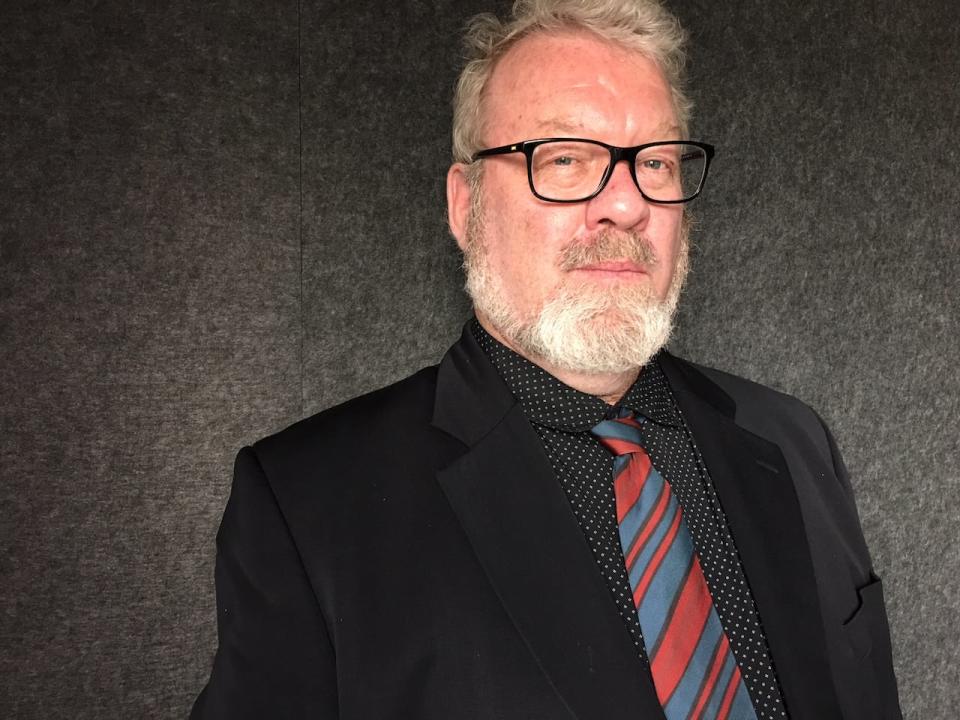
John Ferris, a University of Calgary professor emeritus of history, said he is glad there are tributes to Churchill throughout Canada but doesn't think more are needed. (Ellis Choe)
He called Indians a "beastly people with a beastly religion" during their push for independence from Britain.
And in 1937, Churchill said he didn't feel badly for Indigenous people in the U.S. or Australia, because people of a "higher-grade race" had taken over.
Ferris said Churchill is also criticized for wartime bombing campaigns with many civilian casualties, and for domestic policies that were unpopular with Britons.
Today, critics are most likely to bristle at Churchill's imperialist beliefs, which went too far for even some of his contemporaries.
"He tried to continue the British Empire as far as he could," Ferris said. "Nowadays, there are probably very few people who would sit up and applaud when they hear that that's what Winston believed and was trying to do."
Ferris said he's glad there are tributes to Churchill across Canada, including Edmonton's Sir Winston Churchill Square and statue, a monument in Toronto's Nathan Phillips Square and a Calgary high school bearing his name. But he doesn't think Canada needs more.
Any government or group installing a monument to Churchill is making a political move, he said.
The artistic process
The Edmonton sculptor who created the artwork spent hours working with plasticine and hundreds of pictures trying to recreate the shape of the Churchill.
Danek Mozdzenski, a prolific artist with notable works installed across Edmonton and beyond, watched films, listened to Churchill's voice, read history books, assembled Churchill-like outfits and had models with similar physical features pose in them.
Mozdzenski said he wanted to capture Churchill's emotional and physical injuries.
Some of Churchill's permanent injuries were the result of a hodgepodge of incidents — he'd jumped off a bridge, fell off a horse, crashed an airplane and once absentmindedly stepped into New York City traffic, Mozdzenski said.
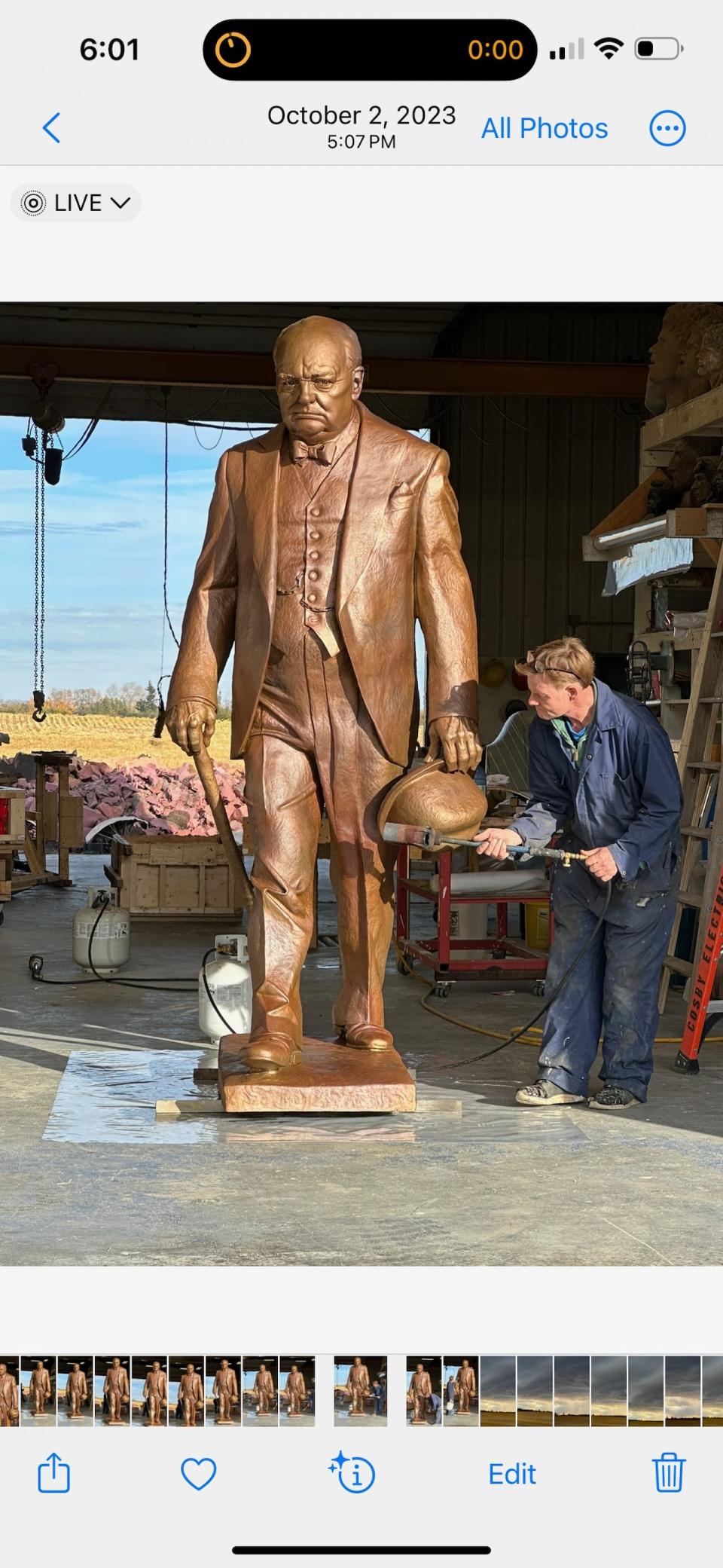
Steve Harman works on the final coats of a bronze Sir Winston Churchill statue at his foundry in Red Deer County. (Submitted by Danek Mozdzenski)
The Calgary monument had to be of Churchill during wartime, he said. He posed him marching forward, hoping to show progress and determination. He holds his homburg hat in his left hand, symbolizing his salute to the British people for their sacrifices.
The sculptor sees Churchill as an admirable character, shaped by the times in which he lived.
"You may not agree with what your grandparents thought, but you're not going to kick them in the teeth, right?" he said. "You're grateful to them."
Mozdzenski says statues are powerful symbols — and targets — because they speak for people who are no longer around to recount history.
"The people who damage them want to get some of the energy and force out of the monument to say what it is they want heard," he said. "You know, they should make their own monuments."

